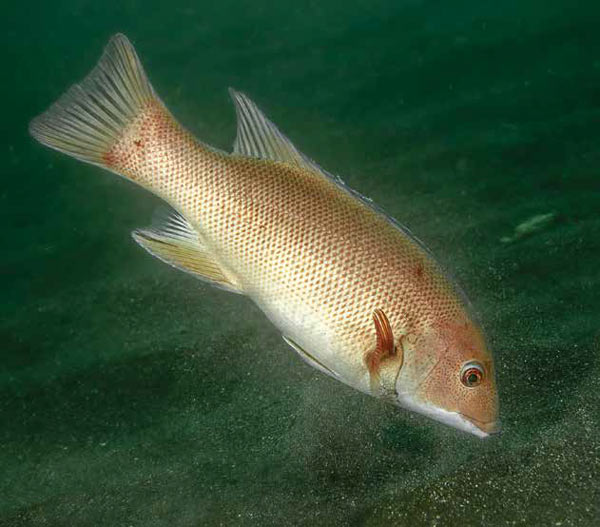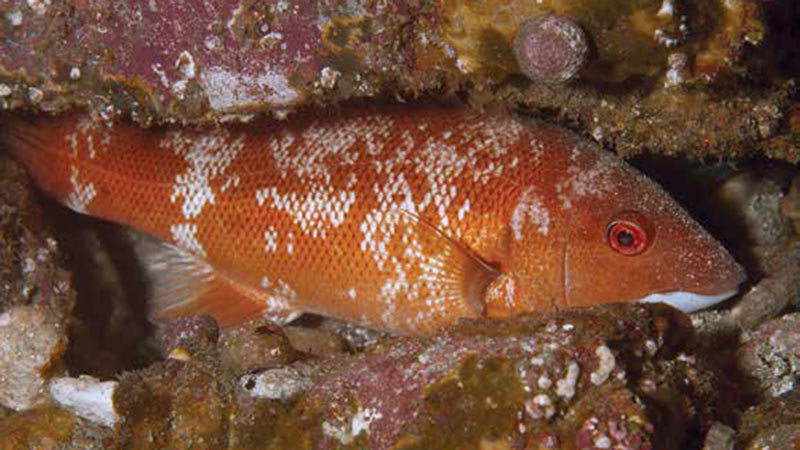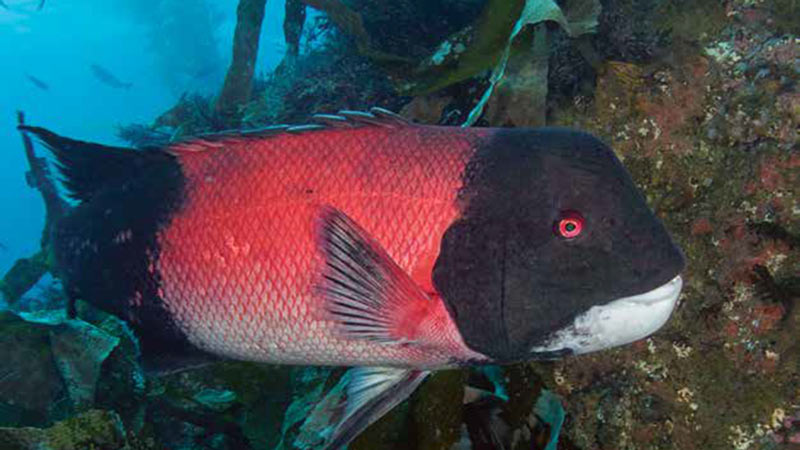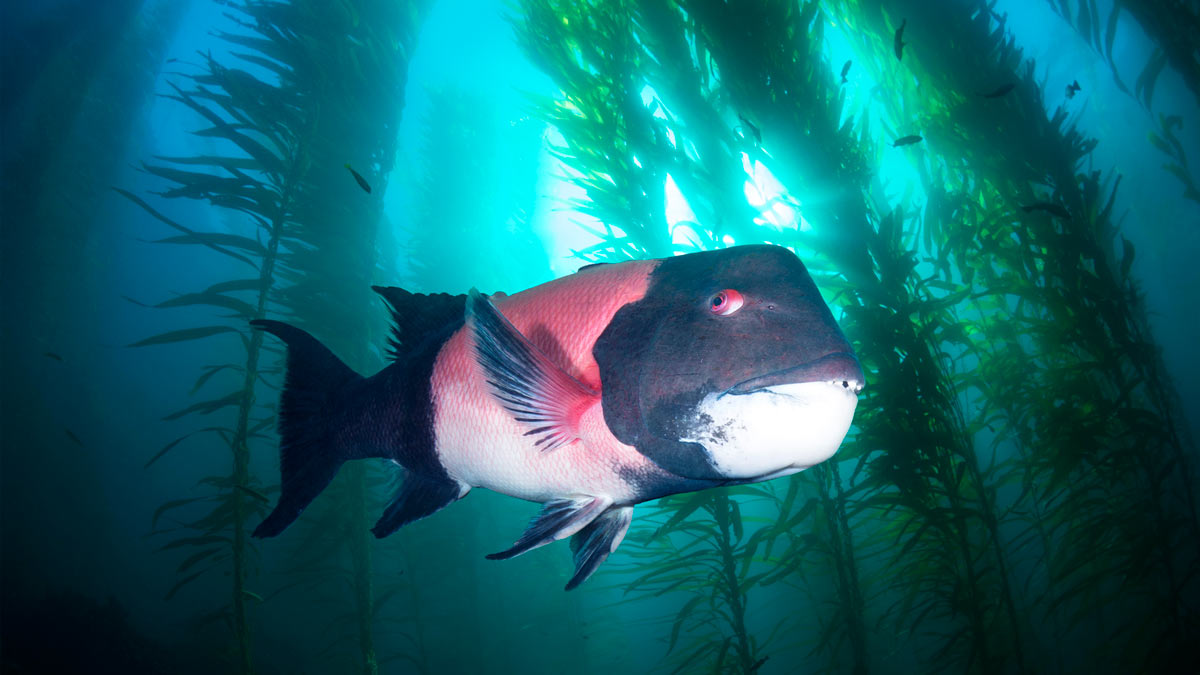With at least 558 species described in 70 genera, the fishes commonly known as wrasses comprise a relatively large family. Most wrasse species occur in tropical and subtropical regions of the Atlantic, Pacific, and Indian Oceans, but some prefer temperate waters, with one being found as far north as Norway. The word wrasse is derived from the Cornish word wragh meaning “old woman” or “hag.” Perhaps that reference is obvious to some, but many species are far more attractive and interesting than the images I conjure up when I those terms.
The California sheephead is one of three species of wrasses that are commonly encountered while exploring California’s reef communities, kelp forests, and nearby sand flats. When I travel the world and encounter other wrasses, I often find myself thinking about and comparing some aspect related to appearance, behavior, or life cycle of the fish I am seeing to that of the California sheephead. That has been the case more than once when I have been fortunate enough to encounter a slingjaw wrasse, which I’ll cover in our companion column, Beyond the Bear. These species share some fascinating traits in common as well as some significant differences.

During the day, California sheephead, like the female seen here, feed on a mix of sea urchins, lobster, crabs, bryozoans, bivalves, and barnacles.
Photo by Marty Snyderman.
FAMILY: Labridae
GENUS AND SPECIES: Semicossyphus pulcher. The genus name Semicossphus is derived from the Greek language, with semi meaning half and kossyphos meaning kind of fish. The word pulcher is derived from Latin for beautiful.
DESCRIPTION: Describing any wrasse is a challenge because juveniles, females, and males are not only different sizes, but they display dramatically different body colors and patterns. Juveniles are as small as the palm of your hand. Their elongate bodies are varying hues of brick red to bright reddish orange to a salmon hue seen in a small subset. Juveniles are further characterized by a whitish stripe that runs horizontally along the length of their mid-body from just in front of the tail past the eye to the front of the face. In addition, they display a single, large bluish-black spot on each fin with another above the white line at the base of the tail.
Females are significantly larger than juveniles, but they are considerably smaller and sleeker than even medium-sized males. The body color of females is a reddish orange that is duller than that of the juveniles. Females have a whitish lower belly. The lower jaw is bright white.
Upon a first sighting, male California sheephead seem to bear little, if any, resemblance to juveniles and females, and it is easy to believe they are different species. Males are stouter, have a prominent, bulging forehead with a fleshy bump, red eyes, a deep black head, upper jaw, and tail with an orangish mid-body. The lower jaw is bright white with a pair of large, protruding, spike-like teeth used for crushing and prying open various invertebrates. Big males attain a maximum length of roughly three feet and can weigh as much as 35 pounds.

At night, California sheephead seek refuge in the latticework of a reef.
Photo by Marty Snyderman.
RANGE: The California sheephead occurs in the Eastern Pacific from Monterey Bay, California to Mexico’s Guadalupe Island off the west coast of the Baja peninsula into the Sea of Cortez.
HABITAT: California sheephead prefer to inhabit rocky reef communities and sand flats that are associated with kelp forests at depths from approximately 10 to 100 feet.
FUN FACTS ABOUT THE CALIFORNIA SHEEPHEAD
The sex lives of wrasses can be as confusing as they are fascinating. Although not the case with many other wrasses, all California sheephead are females at birth. These fish can transform into males when the male/female ratio is out of balance. A study has revealed that in areas where food is readily available, females changed sex at an age of around 13 years and lived to be about 21 years old. In areas with little food, females transformed into males at only five to six years of age while living to be about nine years old, thus in both groups, females changed into males about two-thirds of the way through their expected life span. That said, some California sheephead live up to 53 years.

Big male sheephead attain a maximum length of roughly three feet and can weigh as much as 35 pounds.
Photo by Marty Snyderman.
During their June through September mating season, males become highly territorial. When an opportunity presents herself, a dominant male that has successfully wooed a willing female will lead her in a circle while they broadcast sperm and eggs. As intense as this activity appears to be, if a smaller male swims too close to the action, the spawning male will quickly stop spawning and chase away the intruder. Females release as many as 375,000 eggs a day.
During the day, these diurnal fish feed on a mix of sea urchins, lobsters, crabs, bryozoans, bivalves, and barnacles. In turn, sheephead are preyed upon by California sea lions and harbor seals. By feeding on sea urchins, larger California sheephead play a critical role in kelp forest ecology as the fish help prevent urchin populations from overrunning kelp forests. Their importance makes exploitation by sport and commercial fishermen a significant concern. At night, California sheephead seek refuge in the latticework of a reef where they often wrap themselves in a self-spun cocoon that is intended to prevent potential predators from detecting their scent.










